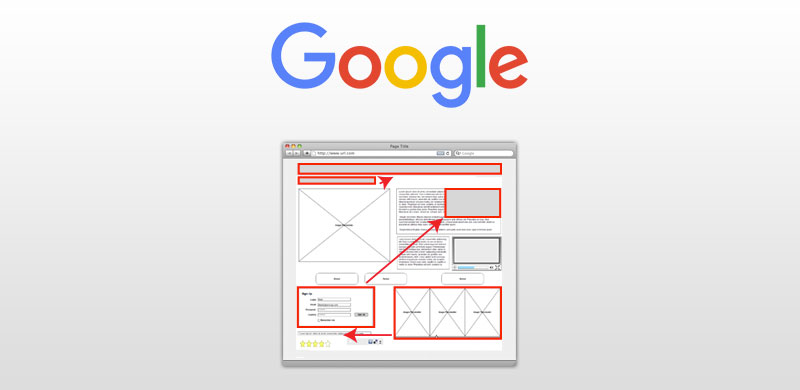
Did You Know Your Page Layout Effects Your Page Rank In Google?
Google is constantly making changes to its algorithm in an effort to improve the user’s experience while searching the web. One of the complaints Matt Cutts and the Google team hear constantly is how difficult it is for a user to find relevant information once they click on a search result. Users don’t want to scroll down to find what they’re looking for. They want their related information above the fold.
What is above the fold? Back in print newspaper days (remember those days?), “above the fold” was a pretty self-explanatory concept. Newspapers folded in half. All eye-catching and important news would be placed “above the fold.” This placement was ideal because that’s the part of the paper that’s seen when newspapers are displayed in boxes and on shelves. In the digital era, above the fold is everything that appears pre-scroll. Of course, this can be a bit subjective, as different devices have various above the fold parameters, and some users shrink the size of their browsers on their desktops or laptops, as a sake of preference. Regardless, above the fold still remains a vital piece of real estate.
In fact, it’s such a vital piece of real estate on your website, that you may be apt to litter it with ads. Ads placed in this part of your screen tend to yield more results. But they may be hurting your organic rankings.
As Matt Cutts described in his own words (in his blog in 2012), “If you click on a website and the part of the website you see first either doesn’t have a lot of visible content above-the-fold or dedicates a large fraction of the site’s initial screen real estate to ads, that’s not a very good user experience. Such sites may not rank as highly going forward.”
What Can You Do To Rank Higher?
When Cutts talks about ads above the fold, he’s not referring to the use of ads in an appropriate manner. He’s referring to sites that load their above the fold section with advertisements. As with much of your marketing strategy, it’s about toeing the line of a careful balance.
Online retailers live in a world of data and statistics, and make decisions based on numbers. But as Google has reiterated time and time again, sites that focus their content and design on user experience – and not algorithmic changes – are the ones that have the most success in their rankings.
Tailoring your site toward a user experience means looking at your site as a whole (how does the “story” flow from one page to another) as well as looking at each individual web page. Many SEOs and marketers suggest that each web page should have its own keyword/key phrase focus. And there’s a good reason for that. By implementing this idea, you can then deliver a more focused and refined user experience to people who happen to stumble your way.
When someone searches for “Blue short-sleeved collar shirts,” which would they prefer to find – a page with many styles of shirts, including a blue short-sleeved collar shirt – or a page that predominantly features the blue short-sleeved collar shirt above the fold?
Not only will users prefer the latter, but search engines will rank that page higher as well, as it’s far more focused on the exact key phrase the searcher used.
Help Visitors Funnel Through The Cycle
Beyond focusing each of your pages on specific products or services, you also want to lead your visitors to other relevant and helpful information. While the above the fold area of your site should predominantly feature the product or service that is the focus of the page, somewhere on the page (an easy scroll down, perhaps) you should also lead your visitor to other options. These options include:
- Checkout and buy (or make the conversion)
- Find more related items
By designing your pages like this, you’re improving your ranking, making your page relevant to searchers, and encouraging them to stay on your website (which, in turn, increases your rankings even further).
Redesign Your Pages For An Enhanced User Experience
Redesigning your web pages for an enhanced user experience can be complicated to achieve. You want to be able to maintain your ads (if applicable), while providing relevant content. You also don’t want to overwhelm your visitors with too much content. The look and design of your webpages is as important as the information displayed on each page. As a leader in developing online marketing strategies, OperationROI can help. Call us at 1-888-277-5429 or fill out our contact form to learn how we can help you boost your ranking through webpage redesigns.






